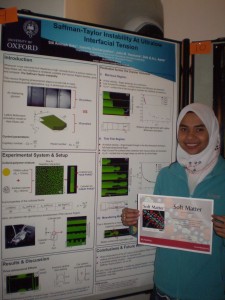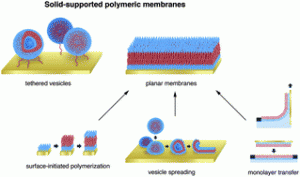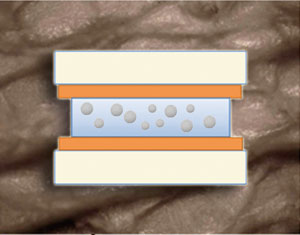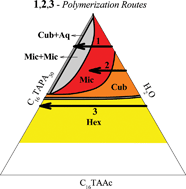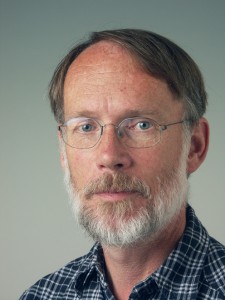
Droplets on a superhydrophobic surface.
Superhydrophobic surfaces capture the imagination of scientists and non-scientists alike and have been studied for over a century. Recently there has been renewed interest in this field due to the potential technological applications of self-cleaning water repellent surfaces. A quick search of Soft Matter, shows that Progress in superhydrophobic surface development, published in 2008, is one of the most read articles of 2010 and has been cited over 160 times.
Current research in this field is focussed on two main areas; the development of rough surfaces with low surface energy and understanding the stability of superhydrophobic surfaces. Below I have highlighted a couple of recent interesting papers in these areas.
Metastable underwater superhydrophobicity

Superhydrophobic teflon surface.
Superhydrophobicity is often considered to be a thermodynamically stable wetting state. In this paper researchers at the University of Cambridge studied the stability of the air film separating the substrate and the water in an underwater experiment. They found that the air film is in fact unstable and decays rapidly. The onset time for decay is dependent on the immersion depth of the superhydrophobic teflon substrate. In nature superhydrophobic surfaces are found, almost exclusively, on surfaces only intermittently exposed to water. The results of this paper help to explain why underwater superhydrophobicity is so rare in nature and raises interesting questions on their viability for some commercial applications.
The paper was published in Physical Review Letters doi:10.1103/PhysRevLett.105.166104. Details on the superhydrophobic surface used for the experiments can be found in Soft Matter doi: 10.1039/B613947G. This paper also has two nice movies attached as supplementary information. Another recent paper on this topic is the Hot Article Cassie-Wenzel and Wenzel-Cassie transitions on immersed superhydrophobic surfaces under hydrostatic pressure.
Self-cleaning solar cells
The accumulation of dust on solar cell panels is a big problem, as it can greatly reduced the efficiency of the panel. In this paper the team in Korea, led by Young-Bum Park, applied a self-cleaning superhydrophobic PDMS surface to a solar cell and studied its properties. The self-cleaning PDMS coating consists of arrays of hollow cylinders formed through micromolding. Dust removal was tested by spraying carbon power on to the surface and washing with water droplets. The carbon coated surfaces had a strongly reduced efficiency of 6.10%. After cleaning the efficiency recovered to 9.76%. The initial efficiency was 11.20%. This work demonstrates that superhydrophobic surfaces can prevent the degradation of solar cell efficiency through a self-cleaning effect. The transparency and flexibility of the PDMS surfaces make it feasible for a while host of applications where self-cleaning is desired. The paper was published in the Journal of Materials Chemistry doi:10.1039/C0JM02463E.












